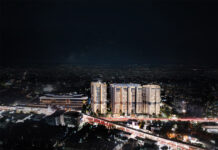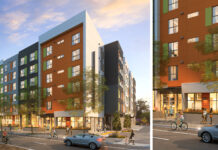SIOUX FALLS, South Dakota: City Hall’s visions for the eastern edge of downtown Sioux Falls aren’t changing – more housing, residential and commercial development and jobs.
But a new method for selling off the 10 acres of city-owned land that once served as a rail yard for BNSF Railway will allow the city and the private sector more flexibility when it comes to what gets built on the property – and when.
Mayor Paul TenHaken’s office recently announced it was scrapping the request for proposals and qualifications process traditionally used by City Hall when targeting purchasers and developers for public-private partnerships. Instead, it plans to use what’s called a “negotiated sale” process that more closely mirrors the way land is bought and sold in the private sector, the Argus Leader reported.
“A lot of it has to do with timing,” said Dustin Powers, an urban planner with Sioux Falls Planning and Development Services. “If someone is looking for a redevelopment site, the RFP has to be available at that exact time. … This process is a continuous process so that we always have develop-able ready sites as part of this property.”
To go along with the listing of the land on the city’s website, a property brochure is available for review by interested parties outlining the city’s vision and goals for the rail yard site. Erica Beck, chief of staff for the mayor, said it’s easier to digest and a more user-friendly document than a traditional request for proposal, or RFP, that spells out benchmarks and requirements like the amount of housing, commercial and retail space that a potential project must achieve.
But the process isn’t as restrictive as an RFP or request for qualifications (RFQ), because those benchmarks can be tweaked and retooled if developers have ideas to achieve the city’s goals in a different way, Beck said.
“If a developer or a business owner came forward and they wanted to propose something out of the ordinary, very innovative and new to our community that didn’t necessarily fit what was defined, in the RFP process they couldn’t even have that conversation with city staff,” she said. “This gives them the opportunity to talk about that with the city.”
The process will provide more transparency than the traditional request for proposals or qualifications as well.
Under former Mayor Mike Huether, the public and City Council weren’t made aware of what developers or project concepts City Hall was pursuing until a project was ready for formal approval, which was late in the process when the bulk of contract terms and building plans had been finalized.
For example, the city began negotiating with the developers behind the now defunct Black Iron Railyard project months before that proposed development was announced in July 2018.
With the negotiated sale process, Powers said the City Council will be made aware when City Hall enters the negotiation process, at which time the name of the developer, the targeted site will be disclosed and the general concept being considered.
Formal approval will come later after a price and building plans have been negotiated.
Sharing information earlier in the process should ease conflicts generated by the handling of RFPs and RFQs by past administrations, City Councilor and former assistant city attorney Janet Brekke said.
“We never got any info until the final decision was made. … That could have been much more open,” she said. “If you have no information about it, you can’t really defend what the city is doing.”
There’s no timeline for when the first deal will come forward on the rail yard property, but Beck said with the amount of interest from prospective developers being strong, she expects progress on the site sooner than later. AP






